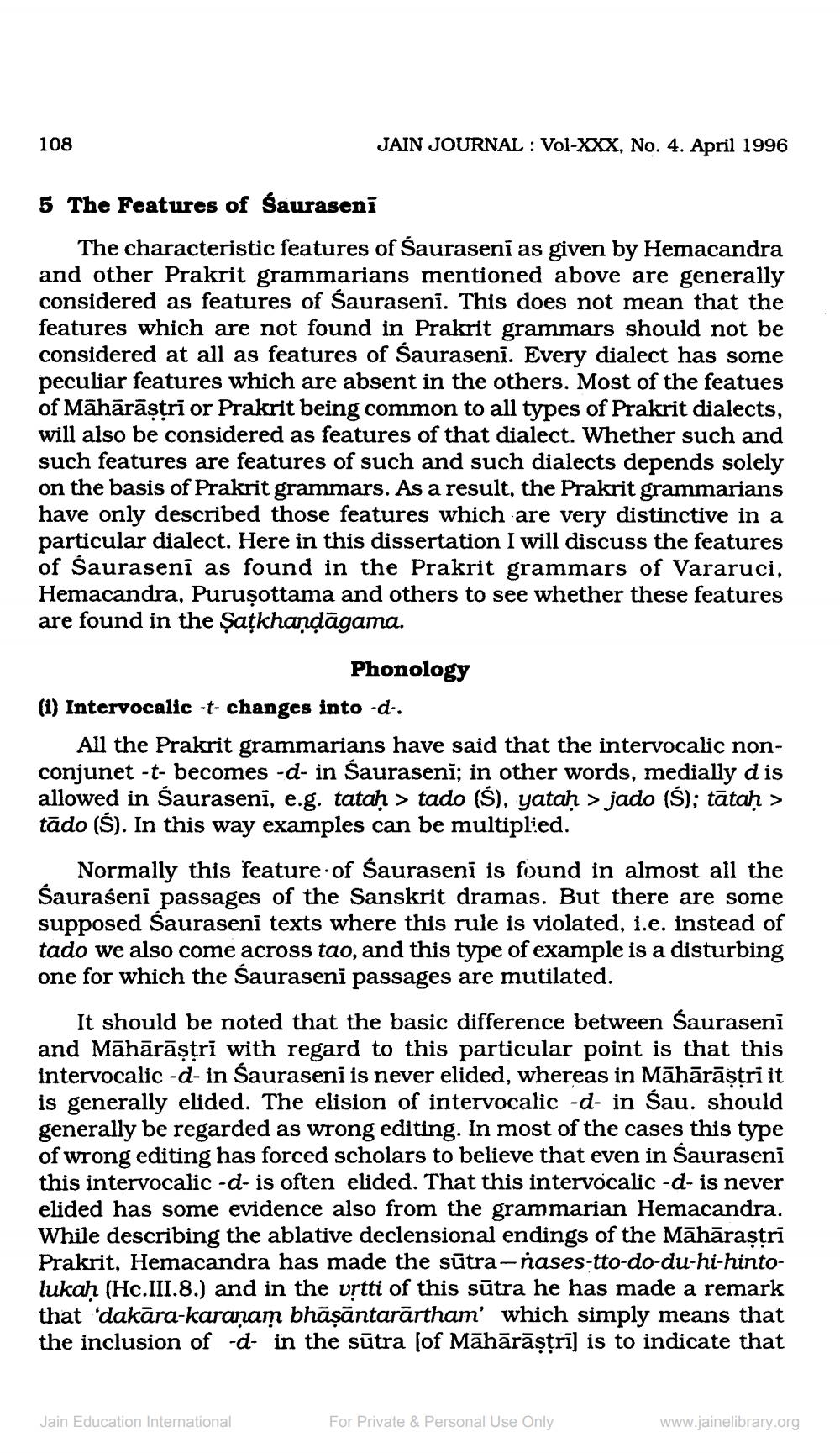________________
108
JAIN JOURNAL: Vol-XXX, No. 4. April 1996
5 The Features of Sauraseni
The characteristic features of Sauraseni as given by Hemacandra and other Prakrit grammarians mentioned above are generally considered as features of Śauraseni. This does not mean that the features which are not found in Prakrit grammars should not be considered at all as features of Śauraseni. Every dialect has some peculiar features which are absent in the others. Most of the featues of Mahārāṣṭrī or Prakrit being common to all types of Prakrit dialects, will also be considered as features of that dialect. Whether such and such features are features of such and such dialects depends solely on the basis of Prakrit grammars. As a result, the Prakrit grammarians have only described those features which are very distinctive in a particular dialect. Here in this dissertation I will discuss the features of Śauraseni as found in the Prakrit grammars of Vararuci, Hemacandra, Purusottama and others to see whether these features are found in the Satkhandagama.
Phonology
(i) Intervocalic -t- changes into -d-.
All the Prakrit grammarians have said that the intervocalic nonconjunet -t- becomes -d- in Śauraseni; in other words, medially dis allowed in Śauraseni, e.g. tataḥ> tado (S), yataḥ > jado (S); tātaḥ > tādo (Ś). In this way examples can be multiplied.
Normally this feature of Śauraseni is found in almost all the Śauraśeni passages of the Sanskrit dramas. But there are some supposed Śauraseni texts where this rule is violated, i.e. instead of tado we also come across tao, and this type of example is a disturbing one for which the Śauraseni passages are mutilated.
Jain Education International
It should be noted that the basic difference between Śauraseni and Mahārāṣṭri with regard to this particular point is that this intervocalic -d- in Śauraseni is never elided, whereas in Māhārāṣṭri it is generally elided. The elision of intervocalic -d- in Śau. should generally be regarded as wrong editing. In most of the cases this type of wrong editing has forced scholars to believe that even in Śauraseni this intervocalic -d- is often elided. That this intervocalic -d- is never elided has some evidence also from the grammarian Hemacandra. While describing the ablative declensional endings of the Māhāraṣṭri Prakrit, Hemacandra has made the sutra-nases-tto-do-du-hi-hintolukaḥ (Hc.III.8.) and in the vṛtti of this sūtra he has made a remark that 'dakāra-karaṇam bhāṣāntarārtham' which simply means that the inclusion of -d- in the sūtra [of Māhārāṣṭrī] is to indicate that
For Private & Personal Use Only
www.jainelibrary.org




